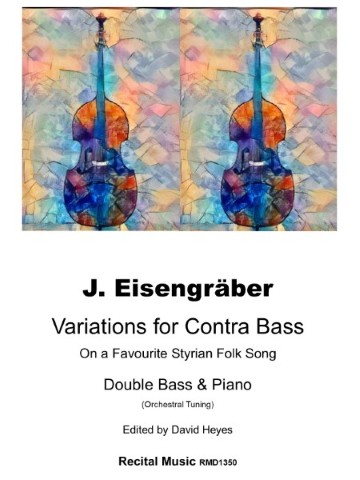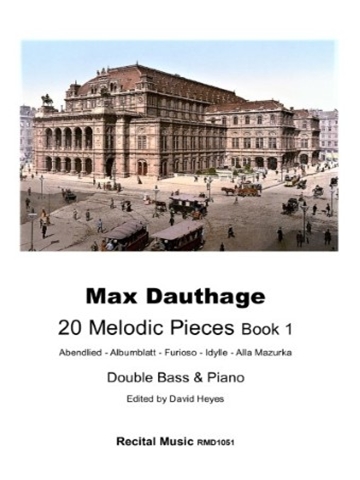First published a century ago, Eisengraber's Variations for Contra Bass On a Favourite Styrian Folk Songis written almost entirely in bass clef using the orchestral…
First published a century ago, Eisengraber’s Variations for Contra Bass On a Favourite Styrian Folk Songis written almost entirely in bass clef using the orchestral register of the double bass for much of the time. The theme and variations model was a particular favourite musical form with 19th-century composers and this piece is effective and accessible as both educational and recital repertoire, and is an ‘easy virtuoso’ piece for the intermediate bassist.
In C major/minor, this is a good piece to develop and strengthen technique in the lower register, with a simple but supportive accompaniment. Much emphasis is based on scale and arpeggio figurations making this a very useful and popular examination piece.
The Introduction [Maestoso] is lively and dramatic, with an arresting and declamatory style, leading into a simple and song-like ländler-like theme [Andante] set against a gently undulating chordal accompaniment. Styria is a region close to Linz in Austria and this favourite folk song from the region lends itself well to the variation form.
Variation 1 [Moderato] is dominated by semiquaver (16th note) figurations, contrasting lively triplet arpeggios in Variation 2 [Allegro], linked by a brief four-bar piano interlude.
Variation 3 [Lento] is in ternary form, with two slow sections framing a brief faster phrase [Vivo], and is an effective duet between double bass and piano.
Variation 4 [Energico] features an upward moving broken arpeggio pattern with a strongly support piano accompaniment, acting as a dramatic link to the next variation.
Variation 5 [Andante] is in the tonic minor (C minor), demonstrating the lyrical and sonorous possibilities of the double bass, leading to a brief cadenza moving through a four octave range and into the high harmonic register of the double bass.
The Coda is in the style of a Polonaise, initially introduced by the piano and with brief harmonic fanfares from the double bass, before the bass takes over the theme, eventually leading into an energetic flourish [Più vivo] which brings the piece to a lively, exciting and successful conclusion.
Nothing is known about J. Eisengräber, who was probably a 19th-century German or Austrian double bassist and composer, and Variations for Contra Bass were published in 1908 in America by Carl Fischer and based on an earlier edition from 1882, first published in Hannover (Germany) by Louis Oertel.





